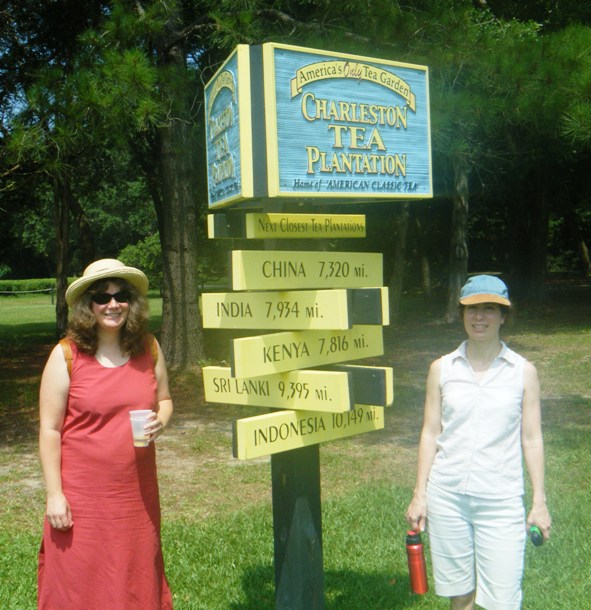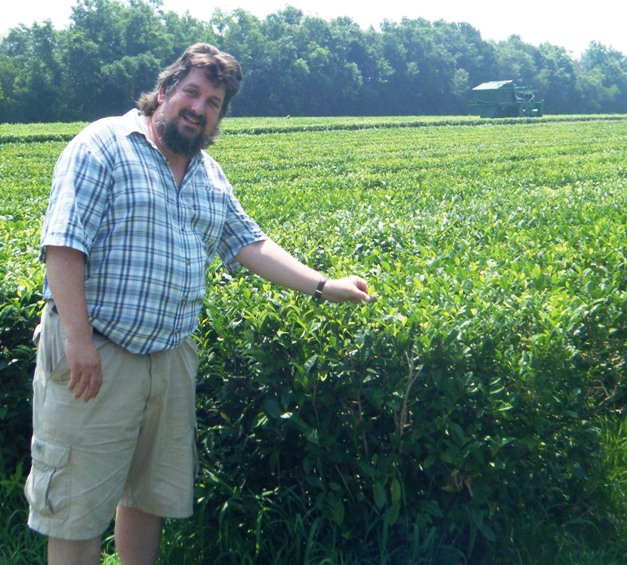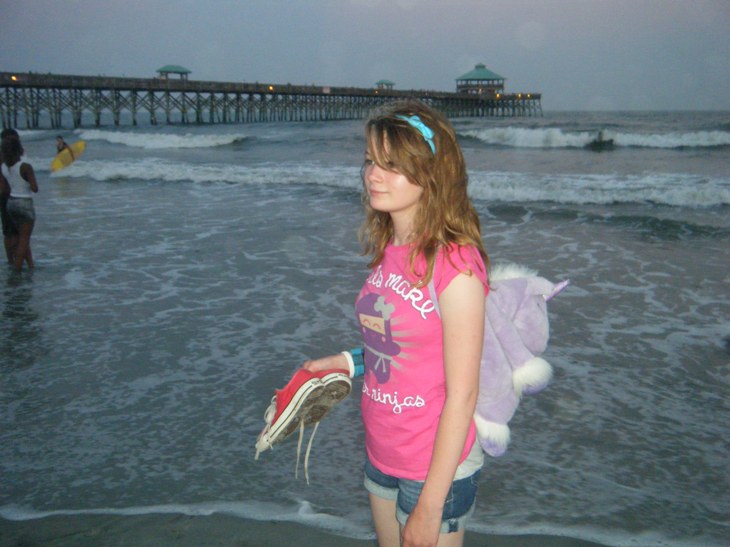County Map ProjectSC - South Carolina
|
County Map ProjectSC - South Carolina
|
In 1990, I enjoyed two visits to South Carolina to inspect dry cleaners in Columbia and North Charleston. Oddly, one of these had the worst environmental practices I have witnessed at any dry cleaner, but the other had the very best practices. Needless to say, one of the owners was much happier to see me than the other was!
 In 2000, we returned in order to visit our friends Homero and Lisa,
whom
we met in Mexico
in 1989, and who were living with their young son in Charleston. We had a
wonderful
time with them, including a great trip to the beach -- where we saw an
orca breaching -- and plenty of time strolling
through downtown and the famous Battery. We happened to be in South
Carolina the day that the Confederate
flag was
removed from the state house, which was reported on local public
radio
in the hushed tones usually reserved for state funerals.
In 2000, we returned in order to visit our friends Homero and Lisa,
whom
we met in Mexico
in 1989, and who were living with their young son in Charleston. We had a
wonderful
time with them, including a great trip to the beach -- where we saw an
orca breaching -- and plenty of time strolling
through downtown and the famous Battery. We happened to be in South
Carolina the day that the Confederate
flag was
removed from the state house, which was reported on local public
radio
in the hushed tones usually reserved for state funerals.
It took yet another decade to make a South Carolina visit in June
2010, adding perhaps one or two counties in the east-central portion of
the state (not yet reflected in the map below), as we took back roads
from Fayetteville, North Carolina to Charleston.
This time we were to visit not only Lisa and Homero (now with a much
older son and aso a daughter, both wonderful, along with three
Volkswagens), but also
to visit North America's only tea farm as part of my research into the geography of tea. In fact, our journey was
subsidized by a small grant from BSC's Center for the Advancement of
Research and Teaching.
 Pam and Lisa consider the distances ... |
I had read a little about the Charleston Tea
Plantation, and
remained a bit perplexed about the geography. How could a crop that
normally is produced by the millions of pounds inlow-wage,
high-altitude locations be sustained in a high-wage country on an
island very close to sea level? After all, as the signs indicate,
nobody else is growing tea within five thousand miles of this place! The geographic mystery was resolved during our private tour
with Bill Hall, the third-generation tea taster who revived the
Charleston Tea Plantation in the 1980s. The locational factors for tea
-- as with any crop -- involve both physical and economic geography.
Tea grows during the warm season, which is nearly year-round in
Charleston. It is not nearly as sensitive to frost as coffee is, so the
mild winters and occasional night-time frosts are not a problem for
this tea. Tea does require about one inch of rain per week. This
coastal location comes close to that on a yearly average basis, but not
week-to-week. So the Charleston Tea Plantation has three, carefully
regulated ponds that provide irrigation water as needed. One reason that tea tends to grow in high elevations is that
good drainage is required to avoid root-rot (other members of the
Camelia genus and similar shrubs such as azalea have the same
limitations). This was one factor that had me particularly perplexed,
because of Charleston's low elevation, but the answer is relatively
simple. The soils on Wadmalaw Island are sandy, and the tea fields
slope gently (one
inch to ten or twenty feet) toward drainage ditches. These sandy soils
lack the nutrient levels required for tea, so fertilizer is carefully
applied. I noticed no signs of excessive nutrient loading in the ponds,
which certainly would have occurred with most routine applications.
|
 |
This leaves (no pun intended)
the economic geography. If tea pickers
and processors in India or China were paid prevailing U.S. agricultural
wages -- low as they are -- tea would cost about $15 per cup. So the
Charleston Tea is a perfect illustration of the development principle
of matching production methods to factors of production. In Charleston,
labor is expensive relative to capital equipment. So the Charleston Tea
Plantation employs ONE tea "picker" who drives an over-grown,
carefullly calibrated hedge-trimmer through the fields. Everything
about the fields is designed to accomodate this machine (shown behind
me in the photo below). The picking is not as careful as hand-picking,
but the plantation addresses this with capital investment, too: a
single operator uses a series of sophisticated wilters, driers, and
separators that compensate for any imperfections in the leaf-cutting
process. The only labor-intensive part of the operation is the removal
of weeds by hand, so that no foreign plant matter is introduced and no
chemical pesticides are required. The last part of the mystery is the deep financial stability provided by the plantation's partnership with Connecticut-based Bigelow. The teas of the two operations are kept separate, but each company provides a variety of benefits to the other. Charleston tea is not "fair trade" in any technical sense, but it can be consumed with a clear conscience, as no under-paid labor is exploited in its production. In the photo to the left, I am pretending to harvest tea the old-fashioned way, by hand-plucking two new leaves along with the bud of a leaf that is about to open. |
Paloma had been a toddler during our previous visit; this time she
was a sophisticated traveler, enjoying Charleston's architecture, its
arts, and of course the ocean. Because of our friends and all the other
attractions, we really hope to get back to Charleston before 2020 --
perhaps for the tea plantation's popular First Flush Festival. And
maybe we'll pick up a few more counties. Paloma was, not surprisingly,
really hoping to get to Myrtle Beach (NE corner).

So far, I have visited the counties shown in yellow (plus at least one not yet shown).

I have been to 26 out of 46 counties in South Carolina.
For a very clear map with the county names, visit Delorme's South
Carolina
Counties page.
Return to my home page.